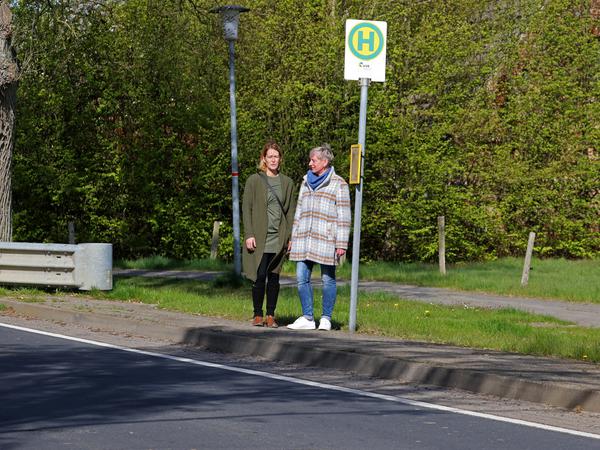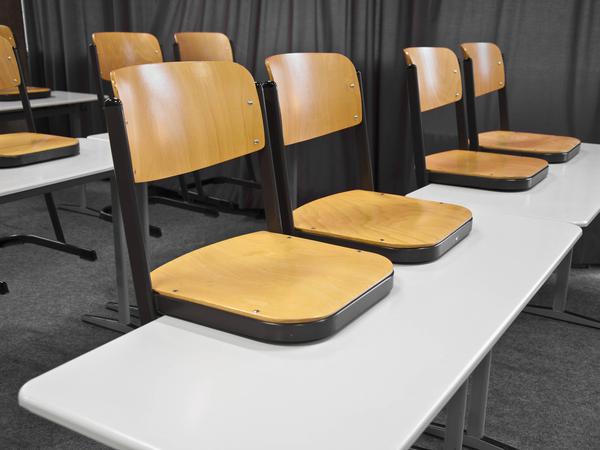At 6.12 a.m. the children in Millienhagen get on the school bus and at 4.40 p.m. they are back home. In between there is a school day at the Gymnasium in Grimmen and three hours of jogging on the country roads of Western Pomerania. An hour and a half there, an hour and a half back. “My daughter accepts it so far,” says Diana Nurkewitz, who lives with her family in the village of Millienhagen and fights for shorter commuting times in a parents’ initiative. “But as a mother, I see that’s a problem.” A problem of equal educational and life opportunities. A problem that is not easy to solve.
The school system is under pressure almost everywhere because there are no teachers. Perhaps even more drastically than in the city, many feel this in the countryside, especially in very sparsely populated areas of East Germany. In the Brandenburg Uckermark there is talk of commuting times for schoolchildren of 270 minutes per day. That’s four and a half hours. And even this holey school offer can only be maintained with difficulty. Brandenburg’s Education Minister Britta Ernst (SPD) recently resigned in a dispute over the right concepts. In Thuringia there is a struggle about minimum class sizes. Saxony allows mini classes to avoid further school closures.
Hundreds of locations were lost in the East after German reunification – back then because there were no children. In Mecklenburg-Western Pomerania, the number of schoolchildren fell from 300,000 when the Wall came down to almost 130,000 in 2010. The number of schools has almost halved – from 960 to 560. At least they should stay, promises Minister of Education Simone Oldenburg (left). But is that enough? Since 2009 the number of pupils has been increasing again, and since the arrival of the refugee children from the Ukraine it has even increased significantly.
The high school in the neighboring town is closed
This is how Diana Nurkewitz experienced it. At her daughter’s high school in Grimmen, the classes are full, says the mother. Her dream would be to reopen the grammar school in Franzburg, which was closed in 2008. It’s only a few minutes’ drive from Millienhagen, where she lives; the three-hour bus ride to school would have been done. “But that won’t happen,” says Nurkewitz. Because she also knows: “Nobody applies there.” The few trained teachers on the market prefer to stay close to the city.

The teacher shortage hits rural schools particularly hard, confirms the Greifswald educationalist Anne Heller. Your university is trying to counteract this with programs. In the “Teacher Country Outing” courses go to rural areas. Education Minister Oldenburg refers to allowances of 20, from autumn even 40 percent of the monthly salary for trainee teachers at selected rural schools. Beginners in mathematics, computer science, biology, chemistry and physics can look forward to bonuses in rural areas.
But even if young teachers are open to the countryside, impressed by the low rents and plenty of breathing space – in the end, Heller reports, questions remain about the nearest shop, the nearest pub, the nearest theater, the connection by bus or train. Then the cat bites its tail. “These are very fundamental problems,” says the education expert.
“It takes away educational opportunities”
The consequences are clear to her: “It takes educational opportunities away”. The selection is smaller, for example if you want a language or science-oriented high school, reports Heller. “It’s a widespread phenomenon that educational opportunities aren’t offered to everyone.”
In an article for the Federal Agency for Civic Education, Heller described two sore points in 2021: The number of graduates without a degree is particularly high in some remote areas. And in rural areas, fewer students graduate from high school. According to this, 40 percent of school leavers with a university entrance qualification go in independent cities. In sparsely populated rural districts it is only 28 percent. Some shy away from the endless paths and toil.
Minister Ernst overturned the dispute over teaching positions in Brandenburg
It’s no different in remote corners of Brandenburg. “It is very clear to me that we have to ensure teaching in all regions of the state of Brandenburg,” emphasized the now former Minister Ernst in her resignation. She justified the step by saying that her own party, the SPD, did not support her concepts.

According to official forecasts, Brandenburg needs 1,800 new teachers for the coming school year. With so many fully trained educators not on the market, Ernst wanted to repurpose 200 teaching positions into administrative and school social worker positions. For example, teachers in schools in rural areas with a high proportion of lateral entrants should be relieved of administrative tasks in order to at least guarantee the prescribed lessons.
Physics only twice per semester
The sticking point was planned cuts elsewhere, namely in resources for remedial and all-day education and for inclusion. The SPD parliamentary group and the co-governing Greens rebelled. The state student council of Brandenburg also finds that redistribution is not enough. “The country simply has to spend more money,” says student representative Paul Neumann.
The 18-year-old high school graduate can describe quite vividly what a lack of teachers means: “From the 7th to the 10th grade I had almost no physics,” says Neumann of his high school in Erkner. “Almost none” means one or two hours per half year. “There are very few teachers, and if another one fails, there are no more classes,” says Neumann. One can imagine that not too many will study physics after such schooling. Another cat-tail problem.
“Further reductions not planned”
Saxony is also struggling with a shortage of teachers and lost hours, but Minister of Education Christian Piwarz (CDU) does not want any school closures either: “A basic network of schools in rural areas has already been established. The Free State is not currently planning any further reductions.” The Free State still remembers the protests from the mid-1990s well. By 2010, around 1,000 schools had also been closed here. Since then, exceptions have been granted if the required number of students is not reached.
According to the Ministry of Education, 20 elementary schools currently have one or more classes below the minimum number of students of 15 in accordance with the law. 19 of these are in rural areas. With a total of at least 60 students per school, a class with fewer than 12 children is also possible. If this number is also missed, cross-year classes are conceivable. However, an official forecast assumes that the number of students will increase by 2029/30. At least until then, there will be a lack of teachers in particular. (dpa)


